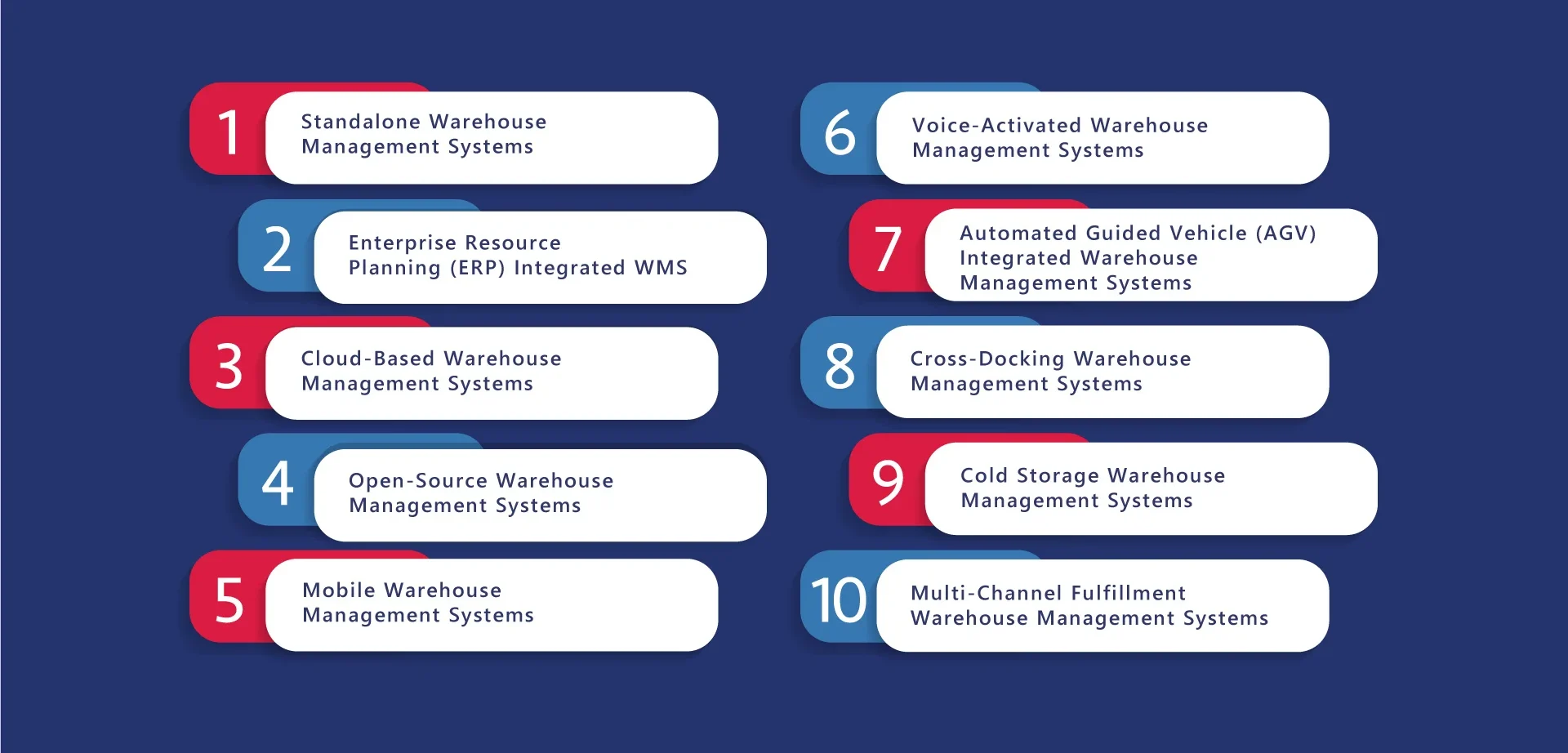The right and effective management of storage space is pertinent for any venture that aims to work out its competitiveness and fulfil customers’ demands. WMS has a central role in these goals by striving to make the processes better, the inventory accuracy more reliable, and in all, helping to improve the general efficiency.
CCO’s expert consultants and staffing services cater to providing the best for operations improvement and optimized result delivery. It defines the basics of WMS and presents types of WMS solutions to simplify the understanding of how you can find the best fit for your business needs.
Understanding of Warehouse Management Systems
Warehouse management systems is a term used to describe software applications that are used to run the Warehouse through controlling, processing and organizing of products that are within the Warehouse.
With the help of the latest technologies such as RFID, Barcode scanning, and workflow automation WMS makes the operation more efficient, and cost-effective, and increases customer satisfaction through fast delivery.
What are the Different Kinds of Warehouse Management Systems?
1. Standalone Warehouse Management Systems:
Some systems are standalone WMS, which operate business-wide but only address the function of warehouses. They cater to precise inventory handling, order picking, packing, and dispatching purposes and do not interlink into an organization’s enterprise-wide systems, making them suitable for companies with requirements for stand-alone warehousing goals.
2. Enterprise Resource Planning (ERP) Integrated WMS:
ERP linked with WMS are elements of global enterprise systems that have modules for accounts, human capital management and others. The integration of WMS with ERP systems ensures that there is a flow of information between various departments resulting in improvement in the flow of decisions to be made based on updated information on stock, orders, and financial transactions.
3. Cloud-Based Warehouse Management Systems:
Web-based WMS indeed have flexibility, scalability and accessibility as most of the data and applications are hosted on web servers. They are real-time and less costly since businesses do not have to pay for the full services at once, as well, as integrating with other cloud services, ideal for companies with branches or variable demands.
Through Cloud-based WMS, businesses are well positioned to quickly respond to market dynamics and entrepreneurial evolution, and to effectively and rapidly increase their operations’ size, as well as to allow data access from any geographical location, thereby increasing operational flexibility and decision making while reducing costs.
4. Open-Source Warehouse Management Systems:
In terms of deployment, there are open-source WMS that supply the clients with tailored solutions plus the possibility to get the source code. They are comparatively cheaper combinations with consequent community backing for continuous modifications and adaptation processes that do not require vendor dependency
WMS which is open-source allows enterprises to enhance the efficiency of warehouses regularly through collaborative efforts among like-minded developers and users to enhance the satisfaction of the various industry standards
5. Mobile Warehouse Management Systems:
Mobile WMS use mobile platforms to support real-time inventory operations and order picking, along with shipment confirmation. It enhances mobility, productivity and accuracy since workers can access warehouse data on a real real-time basis, it replaces paper-based systems and least of the least errors.
Mobile WMS are quite helpful in improving the productivity of the employees, in reducing the cumbersome complexity of operations in large establishments such as warehouses and distribution centres and in expediting the order picking and order fulfilment processes through branded touch screens and bar code scanning technology.
6. Voice-Activated Warehouse Management Systems:
Voice-composed WMS incorporate speech recognition to minimize the amount of tactual manipulation needed toward tasks like order picking and re-stocking. They increase efficiency, shorten training, and raise precision since they replace manual data entry and scanning of barcodes that are convenient in noisy surroundings or those tasks that one has to carry out hand-free.
WMS which is voice-activated improves the flow of work in the warehouse, increases the efficiency of labour, and increases the satisfaction and safety of workers as it allows voice-directed picking and inventorying.
7. Automated Guided Vehicle (AGV) Integrated Warehouse Management Systems:
AGV coupled with WMS helps in automating the transportation of material and products within the warehouse using either automated guided vehicles or robots. These systems increase the degree of work organization, decrease the level of labour expenses, and improve the opportunities for the quick and accurate fulfilment of orders by providing an immediate interaction between the storage and the robotic equipment.
AGV-integrated WMS enhance operational scalability and organizational space management while providing a lean manufacturing solution to the organization’s material handling difficulties by reducing the impact of repetitive tasks and human errors.
8. Cross-Docking Warehouse Management Systems:
Cross-docking WMS helps to intensify goods flow by transferring the products from the receiving to the shipping point with little or no storage in between. They still cut handling costs, promote speedy order turnaround and enable timely delivery of inventory for just-in-time management, thus they are suitable for faster distribution.
Cross-docking WMS improve the efficiency of the internal operations of a warehouse and the speed of response to customers’ requirements owing to low times and turnaround of inventories, and fewer order processing times.
9. Cold Storage Warehouse Management Systems:
Cold storage WMS are effective for maintaining compliance with temperature-sensitive storage for perishable products and medications. They track the temperature conditions in real-time, control the product rotation, and notify about the temperature changes to ensure the product’s quality and the meeting of the standards.
Cold storage WMS improve the clarity of operations, compliance with the legislation, and the facilitating of industry-specific facts due to such features as precise temperature maintenance, tracking inventory, and quality management during cold chain logistics.
10. Multi-Channel Fulfillment Warehouse Management Systems:
Multi-channel fulfilment WMS helps to maintain stock synchronization between online selling channels and physical stores. They streamline order processing operations, avoid stock-outs and improve customers’ satisfaction due to their real-time visibility of inventory status and order status through multiple order channels.
Multi-channel fulfilment WMS helps one/some/all in the following ways: Multi-channel distribution helps in managing logistics functions, increases order accuracy and also helps in business growth by integrating with various channels of sale and also increases efficiency and in managing/providing centralized and consolidated inventory.
Conclusion
The Warehouse Management System is one of the important software solution products that affect crucial business parameters of warehouse operations directly. Due to the diverse nature of WMS solutions, the business has great benefits that allow it to select a system that fits the company’s operations and development plans.
CCO is a consulting and staffing service provider that provides services that address both clients’ needs and how to advise and thus solve problems with operational solutions that will allow for the implementation of organizational growth.
Are you prepared for a change in your warehouse and an increase in efficiency?
Contact CCO today to learn how we can help you or to set goals for your own company!





